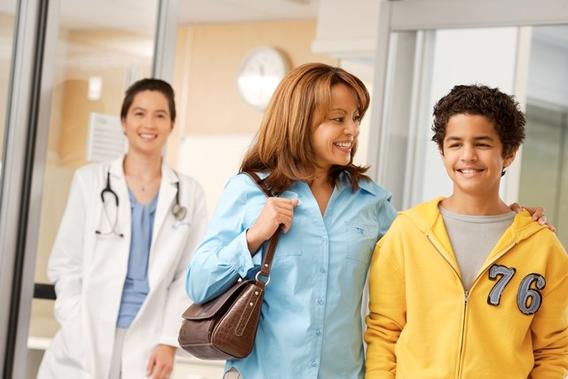
Healthcare Practices that Support Provider-Teen Discussions about Sexual and Reproductive Health
Routine adolescent preventive visits provide important opportunities for promoting sexual and reproductive health and for preventing unintended pregnancy and sexually transmitted infections.
A new study, published in Journal of Adolescent Health by PRC researchers Renee Sieving, Christopher Mehus, Janna Gewirtz O’Brien and their colleagues, examines aspects of healthcare delivery associated with provider discussions about a range of sexual and reproductive health topics with their adolescent patients during routine preventive visits. This study found that specific provider practices including having time alone with adolescents during preventive visits and face-to-face screening about sexual activity are associated with provider-adolescent discussions about sexual and reproductive health (SRH).
“While face-to-face screening about sexual activity increased the likelihood of discussing a broad range of SRH topics, screening about sexual activity during routine adolescent check-ups is not the norm,” said Sieving. “Only 25% of adolescents in this study reported being asked about sexual activity at their last check-up. These findings suggest that if providers do not ask, they may miss opportunities to open the door to conversations about SRH, and, in turn, to deliver needed SRH services to adolescents.”
Based on data from a nationally representative survey of U.S. adolescents ages 11-to-17 years old and their parents, the study’s key findings were that during recent preventive visits:
- Face-to-face screening about sexual activity was associated with provider-adolescent discussions about all SRH topics examined, namely puberty, safe dating, gender identity, sexual orientation, whether or not to have sex, sexually transmitted infections, birth control methods, and where to get SRH services;
- Time alone between adolescents and providers during the last preventive visit was associated with increased odds of provider-adolescent discussions about 7 of 8 SRH topics examined;
- Providers having ever communicated with adolescents and their parents about confidentiality of adolescent care was associated with increased odds of provider-adolescent discussions about selected SRH topics;
- Having discussed a specific SRH topic with their provider at their last preventive visit was linked to adolescents’ beliefs that the particular topic was important to discuss with a healthcare provider. For example, adolescents who discussed sexually transmitted infections (STIs) with their provider at their last check-up were more likely to believe that it is important to discuss STIs with healthcare providers than were teens who had not discussed this topic at their last check-up.
Reflecting on her experience as a pediatrician, Gewirtz O’Brien noted, “It is possible that discussing a range of SRH topics at a preventive visit lets adolescents know that these topics are important and that their healthcare providers are valuable resources when they have questions.”
“These findings provide important directions for efforts to improve the delivery of adolescent preventive services in primary care settings,” noted Mehus. “If we can create clear protocols for primary care providers and staff to use in routinely offering time alone and screening for sexual activity during adolescent check-ups, we can standardize discussions about SRH as an expected element of adolescent preventive care and improve the quality of health care young people receive.”